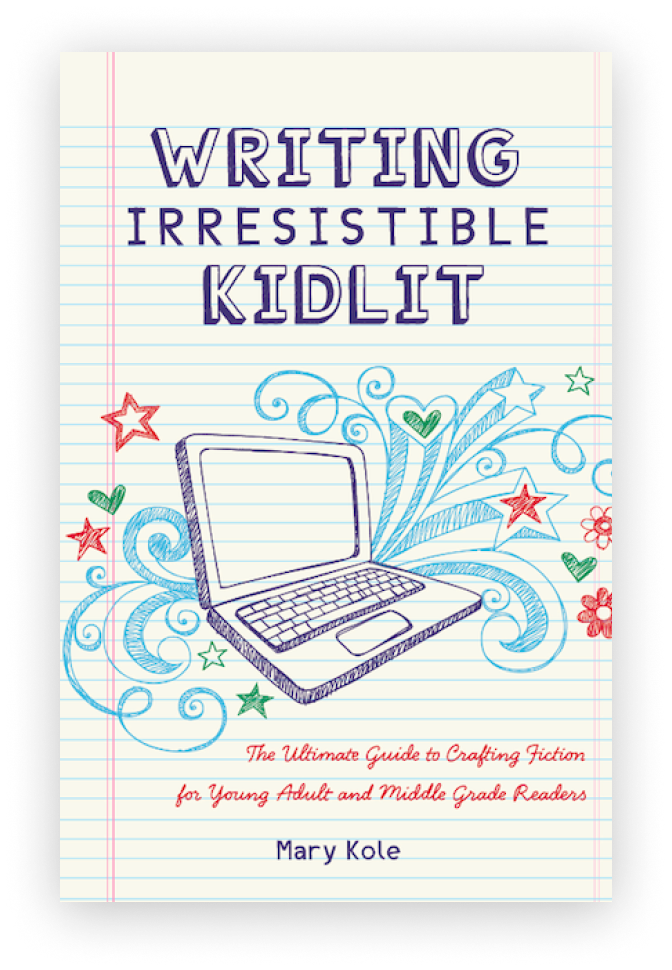Defining A Successful
Novel Premise
By Mary Kole
Mary Kole is a former literary agent, freelance editor, writing teacher, author of Writing Irresistible Kidlit, and IP developer for major publishers, with over a decade in the publishing industry.
If you are a writer with an idea for a book, the first thing you will want to do is craft your book's premise statement. Why? Doesn’t the premise come into play when you’re done writing and ready to pitch your project? Well, yes and no. A book premise is essentially the core concept of your story, and it helps if you know what that is right off the bat. If you’ve already written your book and are getting ready to submit, this advice is still worthwhile, so let’s dig in.
What Is a Book Premise?
A book premise is the core concept behind your story. It includes all the elements that make up your story idea: the setting, characters, plot points, themes, and more. You can use the following frameworks to begin crafting your premise:
In my book, X happens because of Y. Example: “In my book, a tween girl rebels against her society because she is unfairly pitted in a contest to the death.” (The Hunger Games)
What if …? Example: “What if a teen boy falls in love with the daughter of his family’s most hated rival?” (Romeo and Juliet)
A “meets” comparison: “This story is Jurassic Park meets Percy Jackson.” (I don’t know what this story is but I would read it!)
The best way to think about a pitch is that you’re explaining the key story elements (character, climax or other important plot point) in one sentence. It should be succinct yet still contain enough information for readers to understand what type of story they're getting into.
If you find yourself struggling to come up with something, you might have a story issue, not a premise issue.
Why Start With Premise?
The above is exactly why I recommend thinking of premise when you first start seriously getting invested in your idea. Once you have taken a shot at crafting the premise statement for your book, you can focus your efforts and determine the kind of story you want to tell, who your characters are, what the crux of your plot is, and your target audience. All of these things are important to know before you sit down to draft. (If you’re a pantser, you might want to try strategically writing a premise and novel outline, especially if you haven’t done this before.)
Take some time to test out whether your story idea has legs. And then, if you find that it’s worth pursuing (maybe you share your premise with people and they seem excited by it), you can revisit your original premise statement and refine it into a logline or elevator pitch that you can use with agents and publishers.
How to Make Your Premise Successful
Your premise should be engaging and memorable. Think about what makes stories stand out from one another. Does yours have unique characters? An interesting setting? A creative plot twist that gets a listener’s story juices flowing? All these things can help make your premise stand out—but don't forget that brevity is key!
When writing your premise, consider these three questions:
Who are the main characters?
What do they want?
What stands in their way?
These cornerstone story questions will help you focus on creating an interesting conflict. Once you have answered them, use them as guidelines for crafting an effective logline or elevator pitch that captures the essence of your novel in just a few words.
Expressing Your Premise
A logline is typically one sentence that keys in on the central conflict between two or more characters or forces. An elevator pitch has similar goals but tends to be slightly longer than a logline—going up to two or three sentences, and including a sense of why readers should care about this particular story. Both these approaches can help distill your ideas into something concise yet powerful enough to stand out in a crowded market.
No matter what kind of book you want to write, having an effective premise is essential. Crafting an engaging yet concise logline or elevator pitch can seem intimidating at first but you shouldn’t shy away from developing a strong premise. Your book and your future submission process will thank you!
This post contains affiliate links.

Click here to purchase Writing Irresistible Kidlit, my book on fiction craft for MG and YA novels, out from Writer's Digest Books. This will show you my writing craft philosophy and give you lots of valuable advice, including tips for the novel revision process and self-editing. There are over 35 example novels cited and discussed throughout. It’s a valuable resource for any writer’s toolkit.
Click here to purchase Irresistible Query Letters, my book on query letters, including over forty examples with comprehensive notes on each one. There’s a ton of submission advice, best practices, and insider information in these pages, and you’ll really enjoy seeing what other writers are doing in the slush.
Click here to purchase Writing Interiority: Crafting Irresistible Characters, my book on interiority and character creation. Explore your protagonist’s thoughts, feelings, reactions and interpretations, expectations, and inner struggles to create a rich, immersive experience. This guide will empower you to create characters who live and breathe on the page, fostering an unbreakable bond with your audience.





